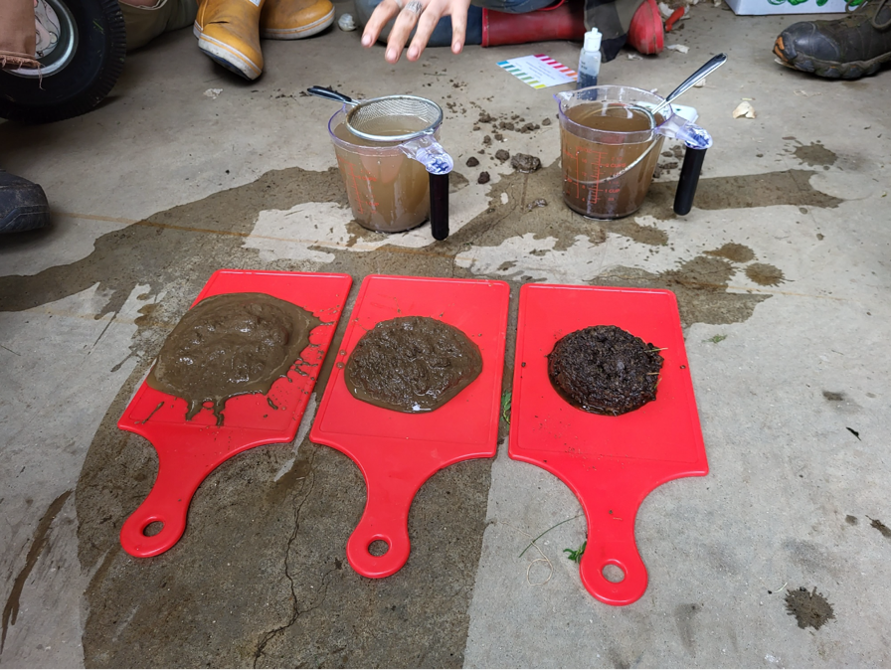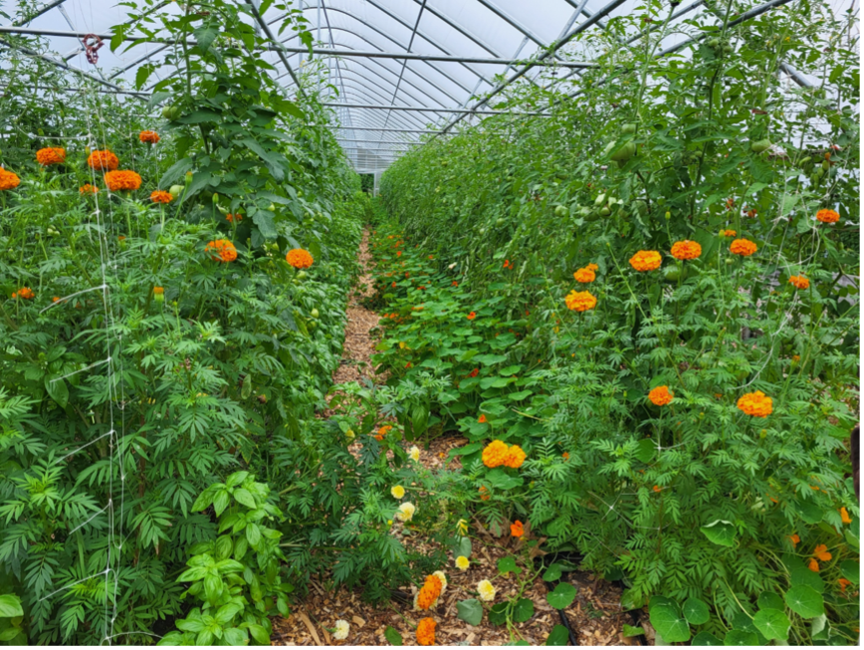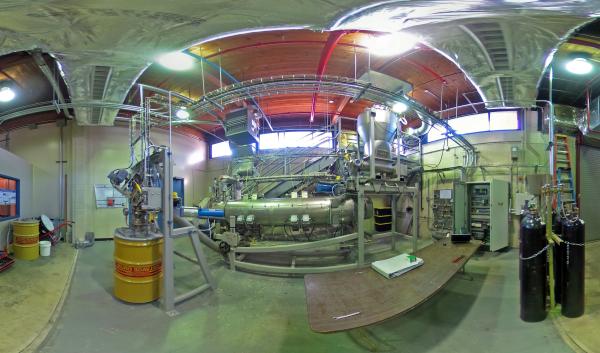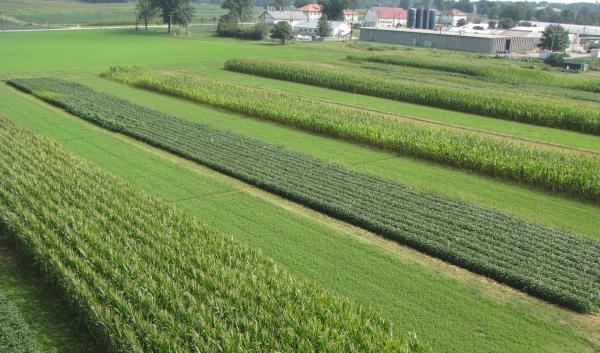Biochar has been gaining popularity in the Northeast over the last few years as a soil amendment in crop fields and pastures, but farmers still have a lot of questions.
According to the US Biochar Initiative, biochar is a charcoal-like product made by pyrolysis (pī-rä’-la-sis), which is the process of heating biomass (wood, manure, crop residues, etc.) with limited to no oxygen. Biochar has been used in agriculture for more than 2,500 years and is becoming increasingly popular in modern agriculture and horticulture systems as a safe, sustainable way to add carbon to the soil.
Organic matter serves an important function and can maintain or increase productivity of soil by increasing water holding capacity, reducing erosion, allowing greater nutrient uptake, reducing nutrient loss, and increasing microbial activity. Excess organic materials, such as waste wood or waste from food processing such as nut hulls or animal manures, can be turned into biochar. The result can help improve the productivity of degraded soils that have a low pH, erosion or compaction problems, low cation exchange capacity, and/or poor infiltration. For the most part, adding carbon to soils will improve them.
Biochar is a little different than other soil amendments. Traditional soil amendments such as fertilizer, lime, or manure, are mostly used for their chemical properties to improve crop productivity. The benefit of biochar is that when added to soil, it also improves biological and physical properties.

CAPTION: Biochar can be made from any type of carbon source and comes in many different shapes and sizes from small chunks of wood-based biochar (left), to compressed prills (center) which can be no-till drilled into soils, to fine particles (right) which can be suspended in water and distributed through irrigation or injection methods. The most common feedstock in the Northeast is biochar made from hardwood chips. Photo by USDA NRCS.
How is biochar produced?
Biochar was traditionally made through piling, covering, and burning vegetation slowly in a low oxygen environment. While this method is still used by communities around the world, there are newer, large-scale methods being used in the US. Biochar can be made in kilns that range in size from small stoves or mobile units to large, industrial size facilities.
How is biochar applied to the soil?
Biochar can be applied any way that soil amendments are applied such as through tillage, surface application, no-till drill or seed slot, trenching when planting perennial crops, injection, or suspended in water through irrigation. To learn more about biochar application, please see this guide published by the US Biochar Initiative.
What makes biochar climate-friendly?
The process of converting organic matter to biochar can mitigate greenhouse gas emissions from decomposing waste. Biochar is made up of stable carbon-based compounds that take thousands of years to decompose; thereby sequestering carbon into the soil.
Furthermore, biochar reduces the need for fertilizer because it holds onto nutrients, which both increases nutrient availability to plants and reduces nutrient loss caused by leaching. According to the US Environmental Protection Agency, nitrous oxide from fertilizer is the largest greenhouse gas carbon equivalent emission from agriculture. It is so large, that it is nearly double that of the second highest source of emissions, which is enteric fermentation from livestock.
Biochar’s ability to increase water holding capacity in soils can also help make farms more resilient to drought and less reliant on irrigation. Overall, biochar may be used as a soil amendment to promote better drainage, aeration, nutrient and water retention, and plant and soil health, which all enhance crop yield.
“The climate benefit of biochar is storing carbon, keeping it out of the atmosphere. It also helps farms be more resilient to extreme weather we’ve been experiencing in the Northeast.“
Erin Lane, Deputy Director of the USDA Northeast Climate Hub and soil carbon researcher

CAPTION: Results of a slump test at a farm in Massachusetts on the same soils but different management. Soil was packed in a kitchen strainer and let to sit for 1 minute in water before being turned over on a board. The soil on the left is from a conventional vegetable farm that uses tillage and chemical fertilizers and herbicides. The soil in the middle is from a tobacco farm that uses tillage, chemical inputs, but also cover crops. The soil on the right is managed organically and not-tilled and has had compost and biochar added to it. Biochar and compost feed microbes in the soil. Those microbes secrete substances which hold soil particles together. When it rains, soil with good aggregate stability holds on to soil particles and nutrients better benefiting the farmer and protecting water quality. Photo by USDA NRCS.
How is biochar used in the Northeast?
Biochar is another tool in the toolbox for farmers in the Northeast to improve soil health and increase their resiliency to extreme weather. Most farmers in the Northeast who use biochar are using a compost-biochar blend of 70-90% compost to 10-30% biochar made from hardwood feedstock. Typically, the best results will be seen when biochar is mixed with compost and allowed to sit for a couple of weeks to “charge” in order to prevent yield drag in the first year. As with any organic matter that hasn’t been broken down, such as wood chips or high carbon to nitrogen ratio cover crops (i.e. winter rye), there can be a yield drag on crops. This happens due to nitrogen tie up as microbes begin to consume the small amount of easy-to-break-down carbon found in biochar. As those small amounts are consumed by bacteria, nitrogen is needed in the process. Once those bacteria die, the nitrogen from the dead bacteria is released back into the soil and available to the plant.
Since most good quality biochar is stable, once the easy-to-break- down carbon is consumed, biochar acts like a sponge holding onto nutrients that might otherwise evaporate up into the atmosphere, run off into water courses, or get lost through the soil. Biochar also provides a structure in which biological organisms, such as bacteria that cycle nutrients can inhabit.
When purchasing biochar, look for a hydrogen to carbon (H:Corg) ratio of less than 0.7 which means it is very stable and will last in the soil for hundreds of years and more. To counteract yield drag, farmers can mix (sometimes called “charging” or “inoculating”) the biochar with nutrients or add compost or manure letting it sit for several weeks.
“We noticed a big difference in the water holding capacity of our soils that contained 10% biochar in our compost mix. We irrigated those beds significantly less than those that contained compost alone.”
Dan Pratt, Founder of Astarte Farm in Hadley, MA
It should be noted that biochar can raise the pH of soils, especially if the biochar has a high ash content, so it may not be a good option for neutral or basic soils. Also, some biochar is high in salts. For example, those made from manure should be used with caution in soils with high electrical conductivity. Generally, wood chip-based biochar that has been mixed with compost or manure and applied at 4-10 cubic yards per acre can have a positive crop yield effect in most soils.
How can I learn more about biochar?
The US Biochar Initiative is a clearing house of information and contains fact sheets such as Beyond Application: Learning More about Biochar. Biochar is also being used in forestry settings. For more information, check out this fact sheet produced by the USDA Northwest Climate Hub about biochar use in fire-prone forests in the west.

CAPTION: High value crops such as fruits and vegetables, including those grown in greenhouses are the most common application of biochar in the Northeast. Pictured is a greenhouse that contains soil amended with compost and biochar. Owners of this farm found that they needed to irrigate less with the addition of biochar and compost versus compost alone. Photo by USDA NRCS.
Funding for Biochar on Farms
Historically, organic matter has decreased significantly in cultivated soils. When soil organic matter is depleted, farmers have to add more costly inputs like irrigation, drainage, fertilizer, and pesticides. Soils low in organic matter are likely to be less resilient to climate change and puts farmers at risk for crop loss.
Farmers have traditionally preserved or added organic matter back to fields by growing cover crops, rotating with perennial crops (such as alfalfa), minimizing disturbance (reduced or no till), leaving crop residue in fields, and/or spreading manure. These practices take a long time to increase soil organic matter; biochar can raise levels much more quickly.
In 2022, the USDA Natural Resources Conservation Service (NRCS) established a new Conservation Practice Standard (CPS) called 336 Soil Carbon Amendment. CPS 336 provides technical and financial assistance to eligible farmers who wish to maintain or increase carbon in their soils by adding amendments such as compost, biochar, or a mixture of both. If you are interested in finding out more about CPS 336 and other climate smart practices, please contact your local USDA NRCS office.




